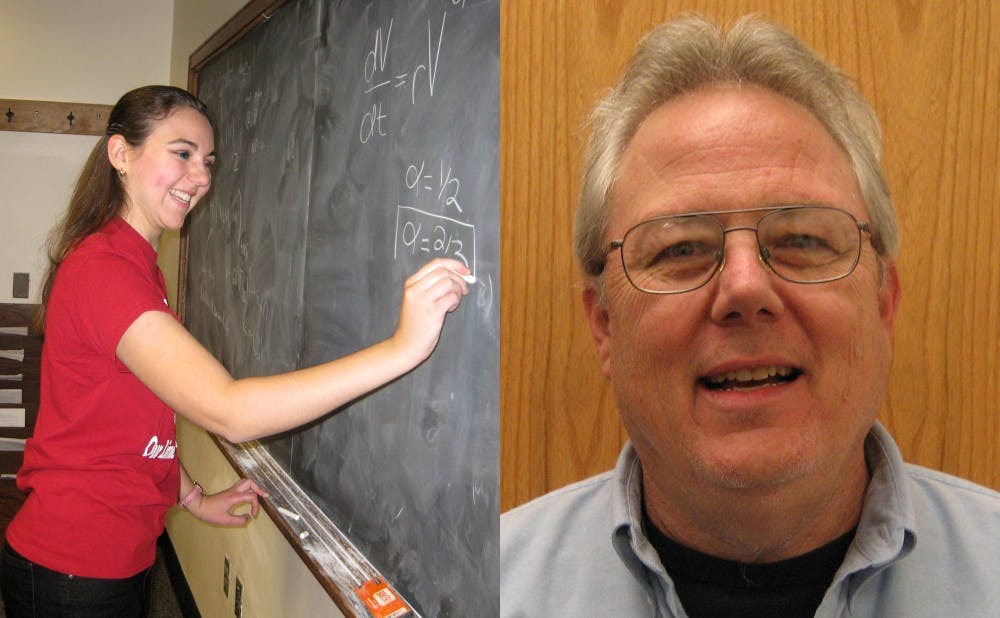Duke researchers have developed mathematical models to predict the growth trajectory of cancerous tumors.
Richard Durrett, James B. Duke professor of mathematics, and Anne Talkington, Trinity '15, are using probability theory to create a model predicting the growth trajectories of different types of tumors. Such predictions may help doctors decide which treatment to prescribe to a particular patient.
“Now we’re learning more about how different types of tumors grow and about what growth trajectories they’re taking and how fast they’re growing,” Talkington said. “Hopefully that will be able to inform doctors about what exactly is going on in the patient’s body and make it easier for them to come up with a treatment approach.”
Because there are treatments that are only effective during early stages of certain types of cancer, knowing the growth trajectories of tumors could also help doctors determine the efficacy of particular treatments, Talkington explained.
The method for comparing mathematical models of tumor growth is outlined in a study Durrett and Talkington published online in the Bulletin of Mathematical Biology.
Talkington explained that the duo met its greatest challenge in developing a model that could utilize the sparse data that can be collected from cancer patients, who often begin treatment as soon as possible after being diagnosed. Ethical and logistical issues prevented the team from taking more than two measurements from each patient Durrett and Talkington tested.
Tumor size was measured immediately after diagnosis, and immediately before treatment started, with the study explaining how to interpret models of tumor growth using just two time-point measurements.
“The problem was with a tumor you can’t just say, ‘I’m going to just let this person’s tumor grow and measure it from time to time,’” Talkington said. “You’re going to want to treat the person.”
Data collected from a patient who had already started treatment would be invalid, as the treatment would affect the growth rate of the tumor, she explained.
Although the lack of human data was an obstacle—typically tumor growth models are produced using mice or under other laboratory conditions—Durrett and Talkington were able use math to adjust their model to the data.
“We began with models that were originally constructed to work with continuous time, but we discretized the model so that it depended on two time points and we looked at the growth or the change in volume as our one data point per patient,” Talkington said.
Durrett explained that the team then charted the change in tumor volume of a number of patients against a variety of standard models. Their logic was that on the correct model, estimated growth rate would be uncorrelated with the size of the tumor, and on the incorrect model, the growth trajectory of the tumors would change as the size of the tumors changed.
The intricacy of biological systems made developing models that were precise but practical given the constraints especially difficult, Durrett said.
“I’m a mathematician so I’d like to report on models I can analyze exactly,” he said. “The biggest challenge is to make a model that is accurate but at the same time is accessible to mathematical work. If a model is too complicated, and biologists want to put every little bit of biology they think is important in there, and that makes it too hard to study. If you have too many parameters it gets hard to see the data. The main thing is, it’s hard to find an accurate model you can analyze.”
Since publishing the study, Durrett and Talkington have started adapting their models to calculate the growth rates of tumors treated with immunotherapy.
“We’re taking the models we had, we’re making them more complex and we’re adding new equations to represent immune system, treatment and different factors of the patients own immune system,” Talkington said. “Our goal for the next few months is to explore these systems.”
Get The Chronicle straight to your inbox
Signup for our weekly newsletter. Cancel at any time.

